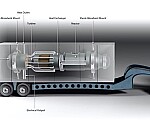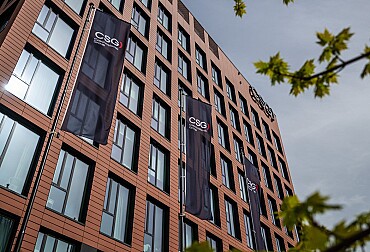South Korea is successfully moving forward with the implementation of AI in the defense sector
Artificial intelligence (AI) is now standard across many areas of human activity, whether it is industry, services, or even security. The use of AI in defense and security is often referred to as an arms race, or rather, a race to implement more and more AI elements into military systems. In addition to technological giants such as the US and China, South Korea, which is among the leaders in the integration of AI into weapons systems, is also joining this "race." This fact is confirmed by recent news from this Asian country.

South Korea is generally considered a technologically advanced country, especially in terms of AI development. This fact is also reflected in the field of defense. For several years, South Korea has been striving for the increasing implementation of AI technologies in weapon systems, as evidenced by comprehensive national plans and strategies. In 2019, South Korea formulated its national AI strategy, which also addresses in detail the development of AI within defense policy, with a primary focus on the use and processing of data with the help of AI. The South Korean army plays a key role in fulfilling AI priorities in defense, establishing the AI Research and Development Center within the Training and Doctrine Command in the same year to plan for the use of AI across C4I, intelligence, firepower, maneuver, protection, and operational sustainment.
In 2020, the South Korean army presented its Army AI Development Promotion Strategy for 2022-2033 and established an AI governance system, followed by the presentation of the TIGER 4.0 concept, which aims to develop the AI capabilities of the South Korean army's ground forces. In 2023, South Korea unveiled the Defense Innovation 4.0 project, which aims to further develop the implementation of AI in defense policy, involving not only the state itself, but also academic institutions and private companies. Last April, the Defense AI Center was opened as part of this initiative, with experts from government, universities, research, and private entities and circles participating in its creation. At the same time, the South Korean government also supports defense research and development through several institutions, such as the Agency for Defense Development and the Defense Agency for Technology and Quality, which fall under the Defense Acquisition Program Administration (DAPA).
These DAPA institutions are now working with Hyundai Rotem to develop the new K3 tank, which could enter production and service by 2040. The K3 tank will be partially equipped with AI technologies, in line with the strategy of implementing AI technologies in the South Korean Army's ground forces. The K3 tank will be equipped with a brand new 130 mm automatic loading cannon, and the fire control system will be enhanced with AI technology. Artificial intelligence will be responsible for autonomous target tracking and engagement, and there are also plans to include decision support for the operator. The new cannon will be integrated into an unmanned turret equipped with anti-tank guided missiles with both line-of-sight and beyond-line-of-sight targeting modes. According to available information, AI elements will also control situational awareness, navigation, sensors, battle management, observation systems, and data processing.
In addition to the K3 tank, South Korean institutions and companies are also working on a new-generation unmanned system project that will complement the KF-21 next-generation fighter jet. Korea Aerospace Industries is responsible for the development of the new unmanned aircraft. According to available information, the concept of joint operations between KF-21 aircraft and new-generation unmanned systems is designed to have drones operating on the front lines, where they track, target, and attack enemy targets, while piloted fighter jets operate from a safe distance. The design of the unmanned systems is intended to make these machines difficult to detect by enemy radarsthanks to their stealth features. According to representatives of Korea Aerospace Industries, the concept of cooperation and joint operations between KF-21 fighter jets and new-generation unmanned systems offers a new way of conducting combat operations, with AI-controlled systems and live fighter pilots working closely together. Pilots will be able to control these drones via a monitor in their fighter jet and assign combat tasks as needed. The development of these drones is expected to continue until 2027, with operational deployment estimated for 2030.
The above projects clearly demonstrate South Korea's efforts to work effectively with AI in the field of defense, which could significantly enhance its capabilities relative to its regional adversaries while also attracting potential customers worldwide. The use of AI in defense and security will undoubtedly become increasingly important in terms of maintaining technological superiority and will also be a factor of deterrence not only for South Korea but potentially for other countries as well. At the same time, South Korea is proving that cooperation between the public and private sectors in the field of defense can integrate and implement advanced AI solutions from civilian life, such as facial recognition or AI assistants, into military technology.







